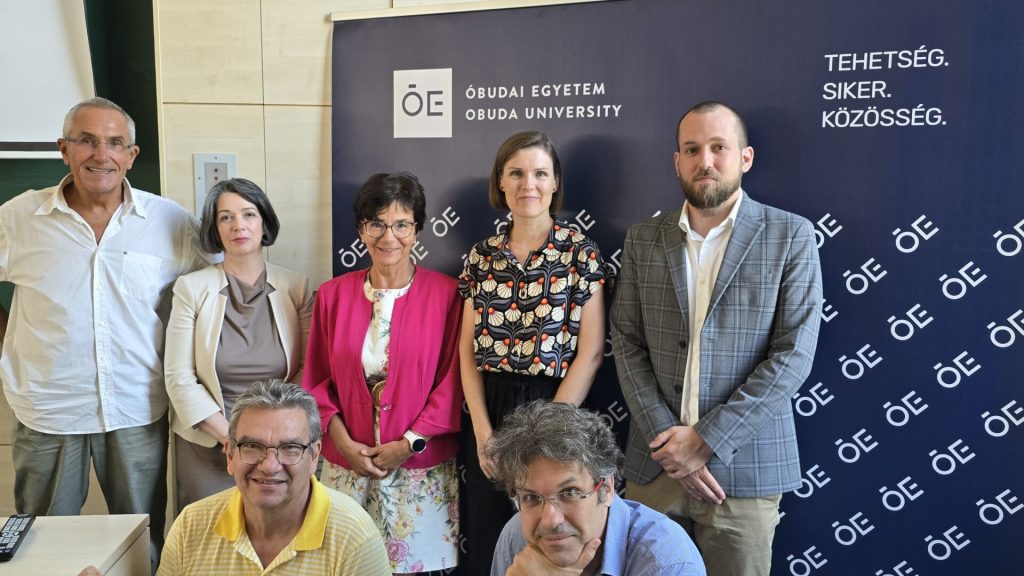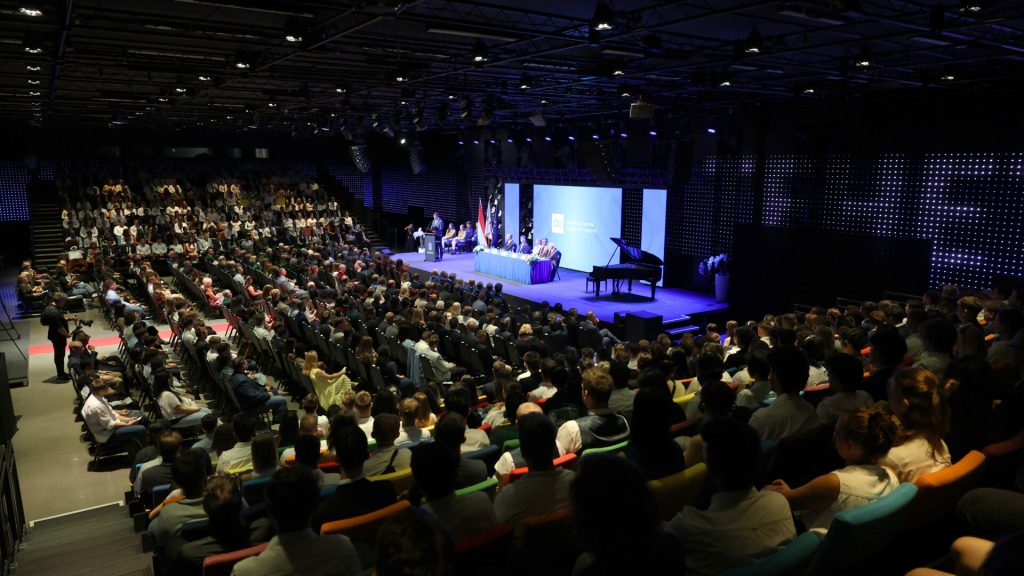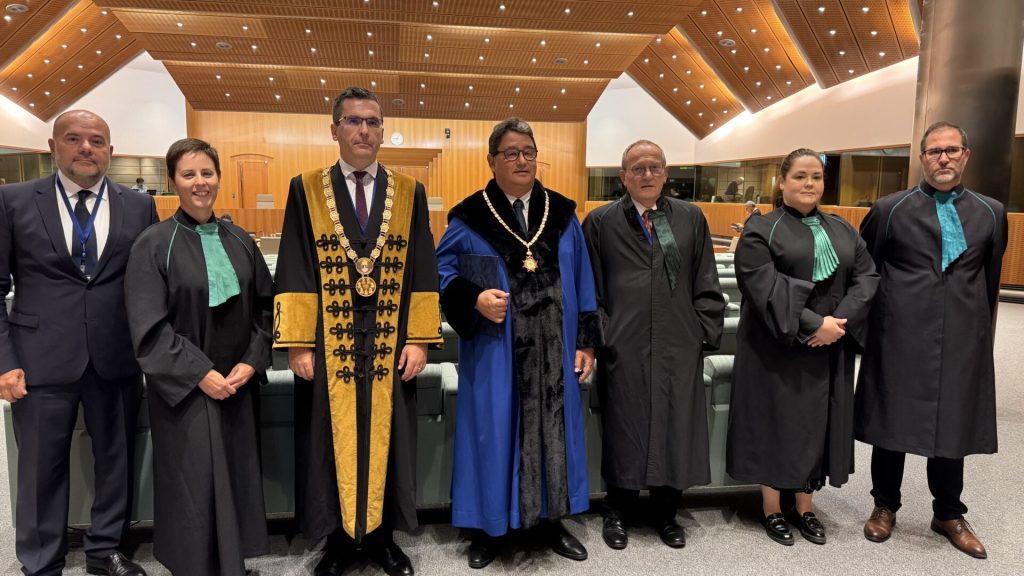Obuda University hosted the mini-conference titled “Research and Innovation in Rare Diseases” on June 26. Researchers presented results from the EU Horizon 2020-funded BUR-EB project, organized by the Health Economics Research Center (HECON).
The BUR-EB European research program aimed to assess the socio-economic burden of epidermolysis bullosa (EB), a rare genetic skin disorder, in seven countries. EB is characterized by fragile skin and mucous membranes, leading to blistering and chronic wounds. In severe cases, it can result in muscle and joint deformities, leading to complete disability. The introduction of high-cost gene therapies (up to $600,000 per patient per year) and robot-assisted care solutions in EB management pose significant financial challenges, even for economically developed countries. The BUR-EB program aims to provide essential data and decision-making analyses to inform health technology assessments for these innovations.

In the group photo, from left to right: top row – László Gulácsi, Márta Medvecz, Márta Péntek, Renata Linertova, Áron Hölgyesi. Bottom row – Gábor Pogány, Zsombor Zrubka
Under the leadership of Prof. Dr. Márta Péntek, HECON, as a member of the BUR-EB consortium, is responsible for analyzing data collection from seven countries (Spain, France, Germany, Italy, Hungary, Austria, and Bulgaria) and conducting health economic evaluations.
Renata Linertova (Consortium Leader, Spain) provided an overview of the project and discussed the role of Health Technology Assessment (HTA) in the introduction and financing decisions of new therapies in Spain. Prof. Dr. Márta Péntek summarized the economic aspects of new therapies and medical devices related to EB in her presentation. Dr. Zsombor Zrubka presented the development of the Hungarian language version of two international standard quality-of-life questionnaires related to EB. Prof. Dr. László Gulácsi discussed the methodological challenges in calculating the costs of healthcare and other resources utilized in EB management, highlighting significant differences between countries. Dr. Áron Hölgyesi presented the initial results of the questionnaire survey, illustrating how disease-related costs vary across the seven participating countries. Informal care provided by family members emerged as a significant determinant in all countries. Dr. Márta Medvecz (Associate Professor, Department of Dermatology, Venereology, and Dermatooncology, Semmelweis University) emphasized that since data collection, new drug and gene therapies for EB patients have gained increasing traction internationally and in Hungary, with individual reimbursement schemes. This development is expected to significantly alter cost structures and the distribution of cost components. Dr. Gábor Pogány (National Alliance of People Living with Rare and Congenital Disorders) participated in the conference, offering valuable perspectives from the patient organizations’ viewpoint during the professional discussion.
The BUR-EB project was realized with the support of the European Union’s Horizon 2020 research and innovation program (EJP RD COFUND-EJP Nº 825575) and the National Research, Development and Innovation Office (2019-2.1.7-ERA-NET).
Further details on the BUR-EB project can be found at:


